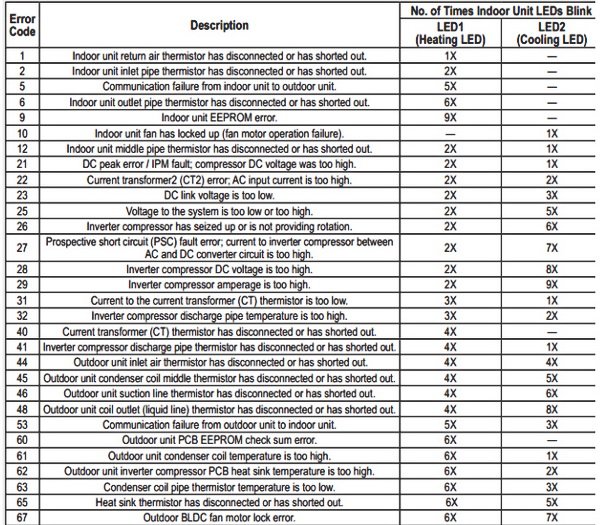
You might feel a bit like a detective trying to solve a mystery, but once you grasp what the E2 error code signifies, you’ll be on your way to a cooler home. The E2 code in LG air conditioners usually relates to a sensor issue, specifically a problem with the indoor evaporator temperature sensor. This sensor plays a critical role, as it helps the air conditioner maintain the desired temperature in your home. Without it working correctly, your AC can’t efficiently manage the cooling process, leading to less comfort on those hot summer days. But don’t worry, we’re here to help you understand what might be causing this error and how you can fix it.
Understanding the E2 Error Code
Here’s the deal: when you see the E2 error code on your LG air conditioner, it’s pointing to a malfunction with the indoor evaporator temperature sensor. Think of this sensor as a thermometer that tells your air conditioner how cool the air is in your home. If the sensor isn’t working right, the AC might misjudge the temperature, which could either leave you sweating or shivering.
You might be wondering why this sensor problem matters. Well, just as a GPS helps you navigate to your destination accurately, the sensor guides your AC to maintain the right temperature. Without it, your unit might think your room’s too warm or too cool, leading to inefficient operation and higher energy bills. Essentially, it’s like trying to bake a cake without knowing what temperature your oven’s set to—things could go awry rather quickly.
Understanding the E2 error is an important first step. It’s usually associated with either a faulty sensor or a disruption in the sensor’s wiring or connections. Either way, knowing this helps you identify whether it’s something you can troubleshoot yourself or if you need to call in a professional.
Common Causes of the E2 Error Code
Now, let’s delve into the potential culprits behind the E2 error code on your LG air conditioner. One frequent cause is a faulty sensor itself. Over time, just like any electronic component, sensors can fail due to wear and tear, physical damage, or sometimes even manufacturing defects. If the sensor can’t accurately read the temperature, it sends misleading information to the AC, which in turn results in that pesky E2 code.
Another possible cause is an issue with the electrical connections. The sensor relies on wiring to communicate with the AC’s main control board. Imagine if the signal’s pathway is interrupted, much like a phone call getting cut off. This disconnection could stem from loose wires, corrosion, or even a damaged circuit board. Such issues are common in environments where humidity and dust levels are high, which can easily affect your unit’s internal components.
Finally, sometimes the problem isn’t with the sensor or wiring but rather a glitch in the AC’s control software. Just like a computer might need a reboot, your air conditioner’s system might require resetting to clear any temporary miscommunications. Understanding these causes equips you with the knowledge to address the issue effectively, either by troubleshooting or seeking expert help.
How to Fix and Prevent E2 Errors
So, what can you do to fix the E2 error code? First, make sure to turn off the power to your air conditioner before attempting any troubleshooting—safety first, always! If you’re comfortable with basic electrical checks, start by inspecting the sensor and its connections. Look for any obvious signs of damage or disconnections. If everything appears intact, gently reconnect any loose wires. Once that’s done, power up the unit again to see if the error persists.
If you’re not confident about fiddling with the internal components, that’s totally okay. It’s often best to call in a professional to ensure everything is checked thoroughly and safely. They can precisely diagnose whether the sensor needs replacement or if there’s a deeper issue at play. Regular maintenance checks can also prevent these issues, much like regular oil changes keep your car running smoothly.
In addition to fixing the problem, consider some preventative measures. Regularly cleaning and maintaining your air conditioner can go a long way in keeping it running smoothly. Keep the unit’s filters clean to ensure good airflow and check for any unusual noises or behaviors. Just like regular doctor check-ups keep you healthy, routine service can help prevent minor issues from blowing up into major problems.
When to Seek Professional Help
Sometimes, despite your best efforts, the solution to the E2 error isn’t clear. This is when seeking professional help becomes a smart move. HVAC technicians have the tools and expertise to delve deeper into the problem. They can perform detailed diagnostics and repairs that aren’t usually possible for a typical homeowner. Think of them as doctors for your air conditioner—they can pinpoint exactly what’s wrong and how to fix it.
If your AC is still under warranty, it’s definitely worth contacting LG support. They might cover parts or the entire repair, offering a hassle-free solution. Plus, they can provide guidance tailored to your specific model.
In summary, while the E2 error might seem like a daunting message from your AC, understanding its causes and solutions can help you keep your cool. With regular maintenance and timely professional intervention, you can enjoy a comfortable home environment all summer long. Remember, just like any minor car issue that can turn serious if ignored, addressing your AC’s alerts promptly can save both stress and money in the long run.